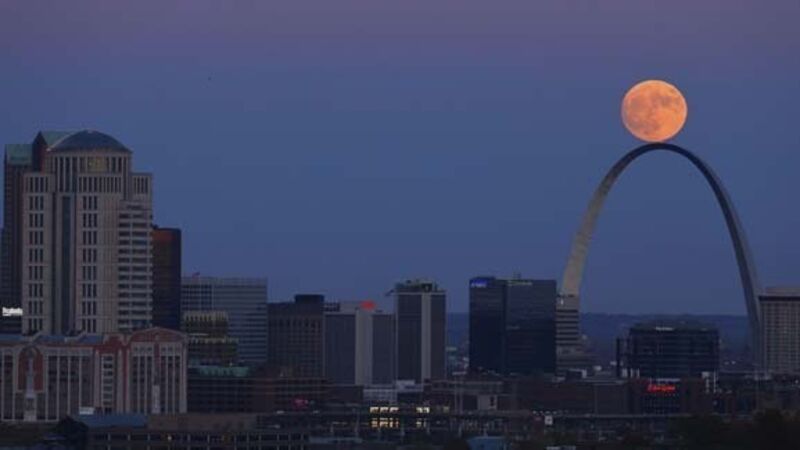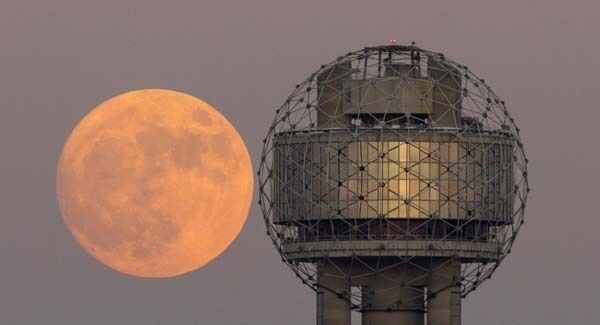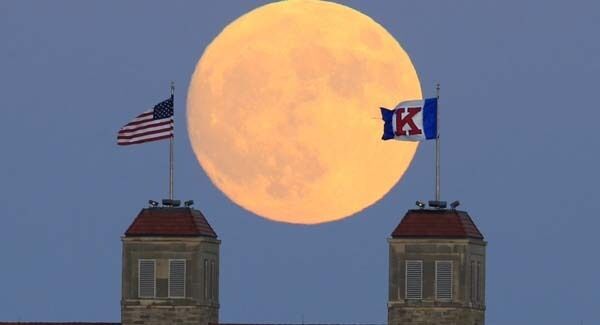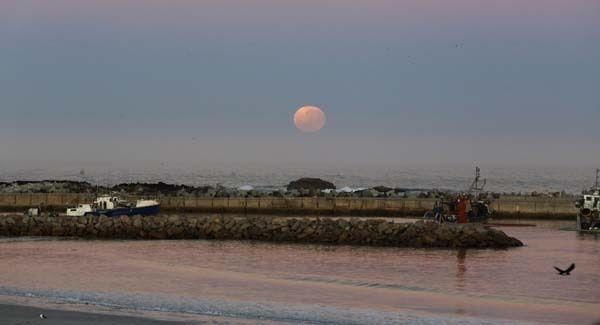Stargazers over the Supermoon as orbit comes closest for 69 years

The brightest moon in almost 69 years will be lighting up the sky this week in a treat for stargazers around the globe.
Plenty ppl down on #broadbeach looking for the #supermoon 🌙, just about see it pic.twitter.com/OeH3Fv2ESR
— Aileen Reid (@aileenmorr) November 14, 2016
The phenomenon known as the supermoon will reach its most luminescent in North America before dawn on Monday.

It will reach its zenith in Asia and the South Pacific on Monday night, while across the international dateline in New Zealand, it will be at its brightest after midnight on Tuesday local time.
Awesome moon view from the beach! #supermoon pic.twitter.com/z79m986WRd
— Lynda Schmidt (@lyndacschmidt) November 13, 2016
The moon orbits the Earth in an oval shape. The moon will be at its brightest this week because it is coming closer to the Earth along its elliptical orbit than at any time since January 1948.
#supermoon #Cork #ireland pic.twitter.com/hY1Wjb0E4F
— @pulllikeadog (@pulllikeadog) November 14, 2016
The supermoon will also bring stronger than usual high tides, followed by plunging low tides the next morning.

Viewers can expect to see a moon about 14% larger in diameter and about 30% brighter than when it is at its furthest from the earth. It will not be as big and bright again for another 18 years.

Nasa says its closest approach will occur at 11:21 GMT on Monday when the moon comes within 221,523 miles. That is from the centre of the Earth to the centre of the moon. Full moon will occur at 13:52 GMT.
Tonights moonrise in Bournemouth was rather special #mycanon #canon #moonrise #supermoon #supermoon2016 #thelensbible pic.twitter.com/qUAm4EUulF
— MattHardyPhotography (@MHardy_Photo) November 13, 2016
According to the astronomy website earthsky.org, the term supermoon entered usage five years ago when the closest full moon fell on March 19 2011. The scientific term is perigee full moon.
In 2034, the moon will come even closer, within 221,485 miles. That, too, will be a supermoon.
A cloudy, almost #supermoon over east #cork tonight. #ballycotton #ireland pic.twitter.com/saufwUkTYL
— Rónán McLaughlin (@romclaughlin) November 13, 2016
Slam Dunk. I've caught the #Supermoon - no one can have it! 😉🌝 #supermoon2016 #BeaverMoon #dorset pic.twitter.com/fTqs7xVvGF
— Mark in Dorset (@dorsetmark) November 13, 2016
Right place, right time. Skies over London and about to be the largest super moon since 1948. #supermoon #supermoon2016 #London pic.twitter.com/8XCj9TB47D
— JULIA KNIGHT (@TWEATYTWEET) November 13, 2016














